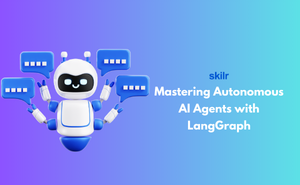👇 CELEBRATE CLOUD SECURITY DAY 👇
00
HOURS
00
MINUTES
00
SECONDS

The LangGraph Autonomous AI Agents certification focuses on empowering learners to design self-operating AI systems. Unlike simple chatbots, these agents can think through problems, make informed choices, and execute steps toward a goal. LangGraph provides the tools to structure their behavior, integrate with external systems, and manage their reasoning effectively.
Through this program, participants will gain practical knowledge of building AI agents that go beyond conversations to perform actual decision-making and automation tasks. These skills will prepare learners to apply AI in industries like customer support, finance, healthcare, and business automation, where efficiency and intelligence are key.
This exam is ideal for:
Industry-endorsed certificates to strengthen your career profile.
Start learning immediately with digital materials, no delays.
Practice until you’re fully confident, at no additional charge.
Study anytime, anywhere, on laptop, tablet, or smartphone.
Courses and practice exams developed by qualified professionals.
Support available round the clock whenever you need help.
Easy-to-follow content with practice exams and assessments.
Join a global community of professionals advancing their skills.
An autonomous AI agent is a system that can make decisions and act without constant human input.
LangGraph provides a framework to structure reasoning, workflows, and tool integration for AI agents.
No, a basic understanding of AI concepts and Python is enough.
Yes, it starts with foundational concepts and gradually moves to advanced topics.
Python is primarily used for building LangGraph agents.
Customer service, finance, healthcare, education, and business automation.
Chatbots only respond to inputs, while AI agents can plan, decide, and take actions.
Yes, the certification covers connecting agents with APIs and tools.
Yes, it supports designing multiple agents that collaborate.
Absolutely, it helps in creating innovative AI-driven business solutions.